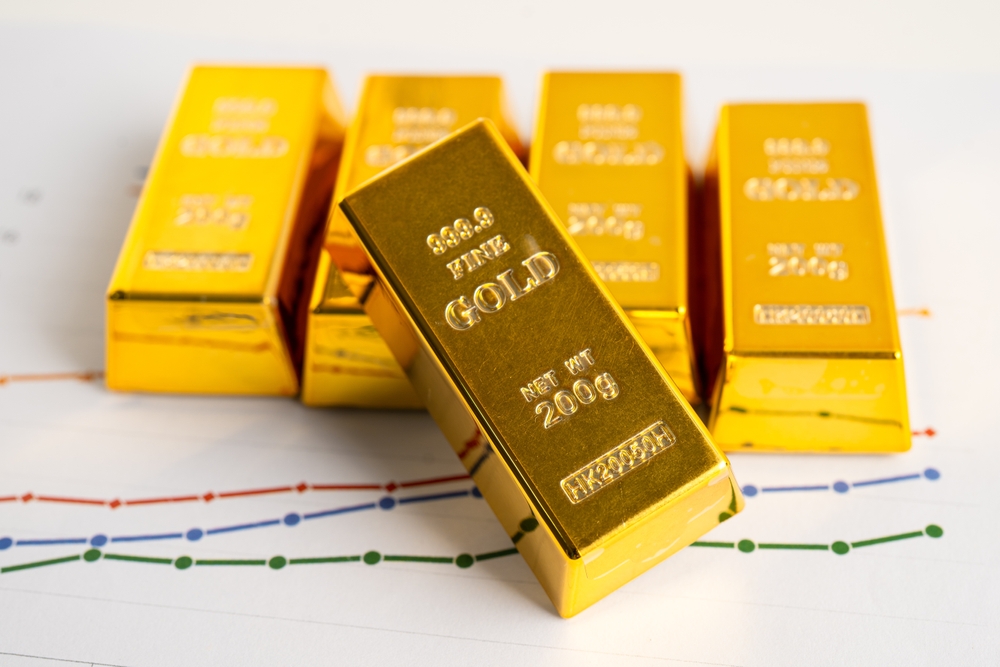Introduction
Invest in gold, a timeless and reliable strategy that has captivated investors for centuries. Gold is not just a shiny metal; it is a symbol of wealth, stability, and security. Whether you’re an experienced investor or a beginner, gold offers unique benefits that make it an essential part of any diversified portfolio. Unlike stocks or bonds, Aarchievgold ensures that gold retains its intrinsic value, unaffected by market volatility or economic downturns. In today’s uncertain financial climate, more people are choosing to invest in gold as a hedge against inflation, currency depreciation, and geopolitical risks. Its global appeal and liquidity make it easy to buy, sell, or trade anywhere in the world.
Moreover, technological advancements like digital gold investments have made this precious metal accessible to small investors. From preserving purchasing power to balancing portfolio risks, gold remains a safe-haven asset with long-term growth potential. If you’re looking for stability and security in your investments, now is the perfect time to explore why you should invest in gold.
The Timeless Appeal of as an Invest in Gold
Gold has captivated people for centuries due to its enduring value and universal appeal. Unlike other assets, gold is not tied to the performance of any government or financial institution, making it a reliable store of wealth. For investors, the decision to invest in gold is often driven by its ability to retain value during economic fluctuations. Whether in the form of gold bars, coins, or Jewellery, this precious metal has stood the test of time as a symbol of stability and prosperity. Gold is also unique because it appeals to both seasoned investors and beginners alike. Its tangible nature offers a sense of security that paper assets cannot provide.
Moreover, the global demand for gold ensures its liquidity, making it easy to buy or sell at any time. This universal acceptance further solidifies its position as a must-have in any diversified portfolio.
Why Gold Remains a Safe Haven in Uncertain Times
Economic uncertainty often leads investors to seek assets that can weather financial storms. Gold has consistently proven itself as a safe haven during such times. The decision to invest in gold becomes particularly attractive during market crashes or geopolitical tensions when traditional investments like stocks or bonds falter. For instance, during the 2008 financial crisis, gold prices surged as investors sought refuge from volatile markets. Unlike fiat currencies, which can lose value due to inflation or policy changes, gold retains its intrinsic worth.
This makes it an ideal choice for those looking to safeguard their wealth against economic downturns. Additionally, gold’s historical performance during crises demonstrates its reliability as a hedge against uncertainty.
Understanding the Modern Investor’s Approach to Gold
The modern investor has numerous options when it comes to investing in gold. While traditional methods like purchasing physical gold remain popular, digital alternatives such as ETFs and blockchain-based invest in gold are gaining traction. These options make it easier for individuals with varying budgets and risk appetites to invest in gold. Digital platforms have also democratized access to gold investments, allowing small-scale investors to own fractional shares of physical gold.
This flexibility ensures that even those with limited capital can benefit from the stability and growth potential that gold offers. As technology continues to evolve, the ways in which people invest in gold are likely to expand further.

Gold as a Hedge Against Inflation
How Gold Preserves Purchasing Power Over Time
Investing in gold is renowned for its ability to preserve purchasing power over time. Unlike fiat currencies that depreciate due to inflation, gold maintains its value across generations. It has stood the test of time, proving its worth during economic downturns and financial crises. For example, while the price of goods and services has skyrocketed over the past century, the value of gold has kept pace. This consistency makes it an essential asset for those looking to protect their wealth from inflationary pressures.
The Role of Gold in Protecting Wealth from Currency Depreciation
Currency depreciation can have devastating effects on an individual’s savings. Inflation weakens the value of money, reducing its purchasing power over time. During such times, gold serves as a reliable store of value. Its global acceptance and intrinsic worth make it immune to the fluctuations that affect paper currencies. Governments may print more money, but gold remains scarce and valuable.
Comparing Gold to Other Inflation-Proof Assets
While real estate and commodities also offer protection against inflation, they lack the liquidity and universal acceptance of gold. Real estate investments require significant capital and are not easily liquidated, whereas gold can be bought or sold quickly on global markets. Stocks and bonds fluctuate with market conditions, but gold remains stable over time. This makes it an attractive option for those seeking both stability and flexibility.
Gold’s Stability in Economic Uncertainty
Why Gold Prices Surge During Market Crashes and Recessions
Gold prices often rise during economic downturns as investors flock to safe-haven assets. When stock markets crash, gold becomes a preferred choice due to its historical stability. This trend underscores why many choose to invest in gold during uncertain times. Unlike paper assets, gold retains its value even when financial markets are in turmoil. A similar trend was seen during past recessions, reinforcing gold’s reputation as a reliable asset.
Case Studies of Gold’s Performance in Financial Crises
Historical data highlights how gold outperforms other assets during financial crises. During the Great Depression, gold maintained its value while stocks plummeted. The 2008 financial crisis saw gold prices surge as investors sought safety from collapsing markets. More recently, global instability and inflation concerns have fueled increasing demand to invest in gold as a hedge against uncertainty. Whether it’s economic recessions, banking failures, or geopolitical conflicts, gold remains resilient.
How Investors Use Gold to Balance Market Volatility
Gold acts as a stabilizing force within investment portfolios, offsetting losses from equities or bonds during turbulent times. Unlike stocks, which are affected by company performance, gold remains independent of corporate earnings. By choosing to invest in gold, investors can achieve a better overall balance and reduce risk. Many financial advisors recommend allocating a portion of investments to gold to improve long-term stability.
Tangible Asset with No Counterparty Risk
The Difference Between Gold and Paper-Based Invest in Gold
Physical gold differs significantly from paper-based investments like stocks or bonds because it carries no counterparty risk. When you invest in gold, you own a tangible asset that does not depend on any third party’s performance or obligations. Unlike financial assets, gold is free from default risks, making it a safer option during economic downturns. This characteristic makes gold an attractive choice for investors seeking long-term financial security. Its physical nature ensures that ownership remains entirely in your control.
Why Physical Gold Offers Security Unlike Stocks or Bonds
Stocks and bonds can lose value due to market downturns, corporate bankruptcies, or interest rate fluctuations. In contrast, when you invest in gold, you own an asset that retains its intrinsic worth regardless of external factors. Gold does not rely on earnings reports, interest payments, or government policies, making it a stable investment. Even during financial crises, gold remains a valuable hedge against economic uncertainty. This unique characteristic sets gold apart as a secure, crisis-resistant asset.
Storing and Insuring Gold for Maximum Safety
Proper storage is crucial for safeguarding physical gold investments, ensuring long-term protection and accessibility. Investors who invest in gold can choose from secure vaults, bank lockers, or home safes with adequate insurance coverage. Secure storage solutions help mitigate risks like theft, loss, or damage, preserving gold’s value over time. Many financial institutions offer allocated storage options to provide additional security. By implementing proper storage and insurance measures, investors can maximize gold’s role as a safe-haven asset.
Diversification and Portfolio Balance
The Importance of Asset Diversification in Invest in Gold Strategy
Diversification is key to minimizing investment risk. By including assets like gold alongside equities and bonds, investors can achieve greater stability within their portfolios. When you invest in gold, you add a hedge against market volatility, ensuring your portfolio remains resilient during economic downturns. Gold’s historical reliability makes it an essential part of a well-balanced investment strategy. With a diversified approach, investors can reduce exposure to sudden market fluctuations.
How Gold Reduces Risk and Enhances Portfolio Performance
Gold’s negative correlation with other asset classes makes it an effective tool for risk reduction. When stock markets decline, those who invest in gold often see strong returns, reinforcing gold’s reputation as a safe-haven asset. This counterbalancing effect helps smooth out overall portfolio performance, reducing financial stress during turbulent times. Many institutional investors rely on gold to stabilize their holdings. Its ability to perform well when other assets struggle makes it a key diversification tool.
The Ideal Gold Allocation for Long-Term Growth
Financial experts recommend allocating 5-10% of an investment portfolio to gold. Those who invest in gold at this level can balance risk mitigation with long-term growth potential. This allocation helps investors maintain financial security while also capitalizing on gold’s value appreciation. Unlike fiat currencies, gold’s worth remains consistent over time, making it a strategic asset. Maintaining the right proportion of gold ensures both wealth preservation and portfolio stability.
Global Demand and Ever-Increasing Value
Gold’s Role in Cultural and Industrial Markets Worldwide
Gold’s demand extends beyond investment purposes into cultural traditions like Jewellery and industrial applications such as electronics. When you invest in gold, you tap into a globally valuable resource that holds significance across industries. Its consistent demand across different sectors reinforces its long-term worth. Gold’s universal acceptance ensures its relevance in both financial and consumer markets.
The Effect of Central Banks and Government Reserves on Gold Prices
Central banks play a crucial role in the gold market by holding substantial reserves of physical bullion. This has a direct impact on those who invest in gold, as government policies can influence price movements. Countries accumulating large gold reserves often drive prices upward, making gold a strong investment option. As central banks continue to prioritize gold as a store of value, demand remains steady.
Trends Driving the Increasing Demand for Gold
Technological advancements continue to drive demand for gold in industrial applications, while geopolitical tensions push more investors toward safe-haven assets. Those who invest in gold recognize its potential as a stable financial instrument amid global uncertainties. The expansion of digital gold investments has further enhanced accessibility for investors. As markets evolve, gold’s value continues to increase, solidifying its role as a long-term asset.
Gold as a Highly Liquid Investment
How Gold Can Be Easily Bought, Sold, or Traded Globally
Gold is one of the most liquid assets available to investors today. It can be easily bought, sold, or traded across global markets, making it an attractive option for those looking to invest in gold. Major exchanges like the London Bullion Market and the Shanghai Gold Exchange facilitate smooth transactions, allowing investors to convert their gold holdings into cash quickly when needed. This liquidity is crucial during times of financial uncertainty when quick access to cash may be necessary.
Comparing Gold’s Liquidity to Real Estate and Other Hard Assets
When compared to real estate and other hard assets, gold stands out for its unparalleled liquidity. Real estate transactions can take weeks or even months to complete, often requiring significant paperwork and legal processes. In contrast, gold can be sold almost instantly through dealers or online platforms. This ease of transaction makes it an ideal choice for investors who value flexibility and quick access to funds.
Best Practices for Selling Gold at the Right Time
To maximize returns on gold investments, timing is crucial. Investors should stay informed about market trends and geopolitical events that can influence gold prices. Regularly monitoring economic indicators such as inflation rates, interest rates, and currency fluctuations can help investors decide when to sell their gold holdings. Furthermore, utilizing reputable dealers or online platforms for selling gold ensures fair pricing and transparency in transactions.
Protection Against Geopolitical Risks
How Political Uncertainty Impacts Traditional Investments
Political instability often leads to market volatility and uncertainty in traditional investments like stocks and bonds. Factors such as elections, trade wars, and international conflicts can significantly affect investor confidence. In such turbulent times, many investors turn to gold as a safe haven asset due to its historical stability.
Investing in gold provides a hedge against these geopolitical risks.
Why Gold Remains a Stable Store of Value During Global Conflicts
Gold has long been viewed as a stable store of value during periods of conflict or economic sanctions. Unlike currencies that can depreciate rapidly due to political decisions or instability, gold retains its intrinsic value regardless of external circumstances. This characteristic makes it an essential asset for those looking to protect their wealth during uncertain times. For example, during the recent geopolitical tensions in Eastern Europe, many investors turned to gold as a safeguard against potential economic fallout.
Gold’s Role in Wealth Protection During Economic Sanctions
Economic sanctions can severely impact local economies and currencies. In such scenarios, holding physical gold can provide protection against devaluation and loss of purchasing power. Investors who choose to invest in gold are better positioned to weather economic storms brought on by sanctions or other political measures.
By maintaining a portion of their wealth in gold, individuals can ensure that they have a stable asset that retains value even when other investments falter.
Limited Supply and Increasing Scarcity
Why Gold Mining Challenges Are Driving Prices Higher
The challenges associated with gold mining are becoming increasingly significant as easily accessible reserves are depleted. Factors such as environmental regulations, rising operational costs, and declining ore grades contribute to the difficulty of extracting new supplies. As mining becomes more challenging and expensive, the scarcity of available gold increases, driving prices higher. This scarcity is one reason why many investors choose to invest in gold.
The Impact of Declining Gold Reserves on Future Investments
As global reserves of gold decline due to increased consumption and mining challenges, the long-term outlook for this precious metal remains strong. Investors recognize that limited supply combined with consistent demand will likely lead to higher prices in the future. Understanding this dynamic is crucial for those looking to make informed decisions about their investment strategies.
Understanding the Long-Term Value of Scarce Resources
Scarcity drives demand; therefore, investing in scarce resources like gold ensures sustained value appreciation over time. As more people recognize the importance of holding tangible assets that retain value amidst economic fluctuations, the allure of investing in gold continues to grow. In an era where digital currencies and paper assets dominate financial discussions, the timeless appeal of physical gold remains unshaken, making it an essential consideration for any serious investor.

Tax Benefits and Government Policies
Understanding Tax-Free Gold Investment Options in Different Countries
Many countries offer tax incentives for investing in physical or digital gold. For instance, some jurisdictions allow tax-free purchases of certain types of bullion coins or bars. Understanding these tax benefits can significantly enhance returns on investment when you choose to invest in gold. Researching local regulations regarding taxation on capital gains from selling gold is also essential.
How Government Policies Influence Gold Investment Strategies
Government policies play a critical role in shaping investment strategies related to gold. Regulations regarding import/export duties on precious metals can affect market prices significantly. Additionally, central banks’ policies regarding their reserves influence overall demand for gold globally.
Legal Considerations for Buying and Storing Gold
When investing in physical gold, it’s crucial to comply with local laws regarding ownership limits and storage requirements. Some jurisdictions may have specific regulations regarding how much gold individuals can own or where it must be stored (e.g., within secure facilities).
Gold’s Role in Digital and Technological Advancements
The Rise of Digital Gold and Blockchain-Based Investments
The advent of technology has transformed how people invest in various assets, including precious metals like gold. Digital platforms now allow fractional ownership through blockchain technology, making it easier than ever for small investors to invest in gold. These innovations make it possible for individuals without significant capital to participate in this lucrative market.
How Technology is Making Gold More Accessible for Small Investors
The rise of mobile apps has democratized access to investing in precious metals like never before. These platforms allow users to buy small amounts of physical or digital gold with ease, eliminating barriers associated with traditional investment methods.
This accessibility empowers more people than ever before to consider investing in gold as part of their financial strategy, regardless of their initial capital outlay.
The Future of Gold Investments in a Digital Economy
As digital economies continue expanding rapidly across the globe, innovations such as tokenized gold will redefine how people approach investing in this timeless asset. With increasing interest from younger generations seeking alternative investment options beyond traditional stocks/bonds/real estate, gold’s future looks promising within this evolving landscape.
Conclusion
In conclusion, investing in gold offers numerous advantages, from hedging against inflation and providing stability during economic uncertainty to ensuring liquidity and protection against geopolitical risks. Its unique characteristics make it an essential component of any diversified investment portfolio. Whether you opt for physical bars or explore digital options available today, choosing to invest in gold ensures long-term financial security amidst ever-changing market conditions. As you consider your investment strategy moving forward, remember that incorporating precious metals like gold into your portfolio not only adds diversity but also serves as a safeguard against potential downturns, making it a wise choice for both seasoned investors and newcomers alike!
Ready to secure your financial future? Explore the timeless value of gold today with Aarchievgold. Whether you’re starting small or expanding your portfolio, investing in gold offers stability and long-term growth. Visit our website today!
FAQs
Why should I invest in gold?
Gold is a reliable asset that acts as a hedge against inflation, protects wealth during economic uncertainty, and offers long-term value. Its liquidity and global acceptance make it an essential part of a diversified portfolio.
What are the best ways to invest in gold?
You can invest in physical gold (bars, coins, or Jewellery), gold ETFs, mutual funds, or even digital gold through online platforms. The choice depends on your investment goals and risk tolerance.
Is gold a safe investment during economic downturns?
Yes, gold is considered a safe-haven asset. Its value often rises during market crashes or geopolitical crises, making it a reliable option for preserving wealth.
How much of my portfolio should I allocate to gold?
Financial experts typically recommend allocating 5-10% of your portfolio to gold for optimal diversification and risk management. However, this may vary based on individual financial goals and market conditions.








